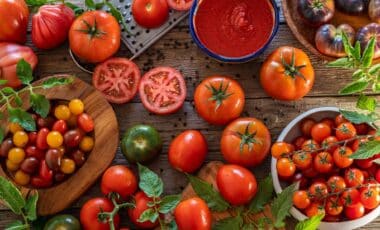
Over the last few years El Dia de los Muertos, or “The Day of the Dead” has become a pretty popular theme in series, books, movies and parties. Many people think that it’s the Mexican version of Halloween, but the truth is that the two are quite unlike. While Halloween is more of a night of terror and “dark” magic, The Day of the Dead is a two-days festival (November 1-2) full of colour, joy and life. Here are five things to know about El Dia de los Muertos.
Altars

Photos: Courtesy of mexicodesconocido.com.mx & PDZ
Known as ofrendas, they play the most important role in El Dia de los Muertos. They are built inside homes or cemeteries and serve the purpose of welcoming spirits back to the world of the living rather than worshipping. The altars are loaded with offerings for loved ones, including food, clothes, photos and one candle for each dead relative. In the case of the young, you’ll find little toys and stuffed animals. Marigolds and decorated coloured paper called papel picado are the most important type of decoration; while the flowers will be scattered on the floor, serving as a guide for when souls make their way back to their place of rest, papel picado just give a sweet touch of colour to the altar.
Costumes
 Photos: Courtesy of culturacolectiva.com.mx
Photos: Courtesy of culturacolectiva.com.mx
Dressing up as skulls and skeletons, or Catrinas, is part of the tradition. People of all ages re-create beautiful and colourful face paintings, put on suits and fancy dresses that match the alluring floral headbands. Ultimately, El Dia de los Muertos is a social holiday where people make the most out of being creative with their costumes.
La Catrina
 The story of La Catrina goes back to the 20th Century, when Jose Guadalupe Posada, a Mexican political cartoonist created an illustration to accompany a literary calavera—Mexican traditional versed composition. The Calavera Garbancera, as he named it, was dressed in fancy French garments making a statement about Mexican society’s fantaism towards European culture and style.
The story of La Catrina goes back to the 20th Century, when Jose Guadalupe Posada, a Mexican political cartoonist created an illustration to accompany a literary calavera—Mexican traditional versed composition. The Calavera Garbancera, as he named it, was dressed in fancy French garments making a statement about Mexican society’s fantaism towards European culture and style.
Years later, it was Diego Rivera (Frida Kahlo’s husband) who decided to add Jose’s calavera in his masterpiece Dream of a Sunday Afternoon in Alameda Park, where the fancy skeleton lady was wearing a large feminine hat accompanying Diego and Frida. He decided to call her Catrina the feminine version of Catrin, a slang used to name the rich. Today, the calavera Catrina is the Day of the Dead’s most known symbol.
Food

Photos: Courtesy of Amado Café
It’s common to find big dishes of food served in the altars, as families place their dead loved one’s favourite meal there. However, there are also different dishes and sweets that you will only be able to find during the festivities. For instance, the Pan de Muerto—yes, you guessed it, the bread of the dead—is a typical sweet bread featuring anise seeds, decorated with bones and skulls made from dough. Some places will sell a vanilla or strawberry version. You can also find ones stuffed with nutella or even ice cream. Be sure to try it with Mexican hot chocolate.
Fairs

Photos: Courtesy of PDZ
One of the biggest traditions for Mexican families is visiting fairs around the city to get sweets, altar decorations and typical skull sweets made of sugar or chocolate. The Feria del Alfeñique, or Alfeñique Fair, is an annual event that takes place in the city of Toluca; it is one of the biggest and most famous fairs of the country. Vendors will sell traditional sugar skulls with names labeled on the forehead. It starts in the middle of October and lasts up to the beginning of November.
(See also: Checklist To An Enchanting Getaway In Mexico)







